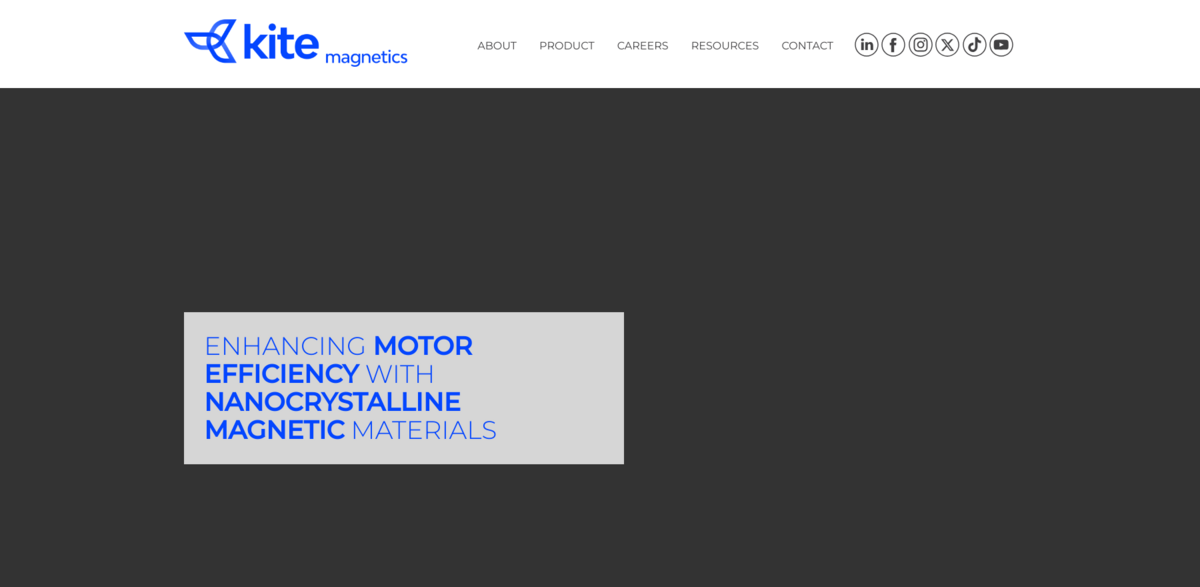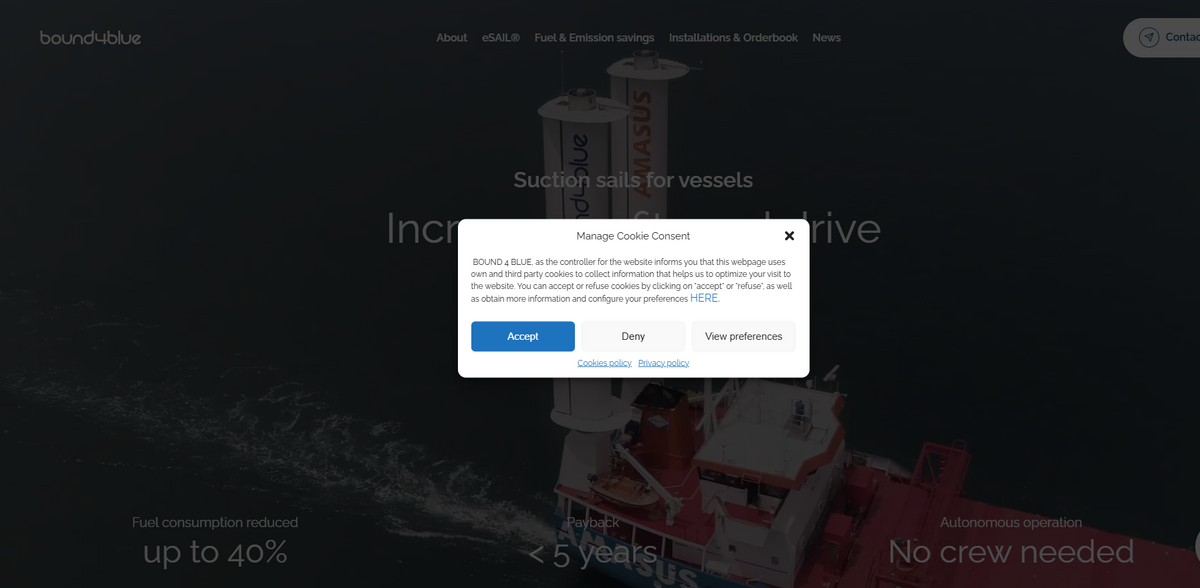What the Project Is
Kite Magnetics offers a range of nanocrystalline stator cores that enhance electric motor efficiency, extending the range and payload capacity of electric vehicles. The technology, developed at Monash University, is designed to seamlessly integrate into existing manufacturing processes, providing an immediate boost in efficiency and vehicle-wide cost savings. The advanced magnetic materials reduce stator core energy losses by up to 97%, creating smaller, lighter, and more efficient electric motors that ultimately improve overall vehicle performance. This cutting-edge innovation is backed by venture funding and is built from the ground up to be certifiable for use on Part 23 aircraft. In the world of sustainable aviation and electric mobility, Kite Magnetics is enabling electric aircraft of all sizes to fly further, carry more, and emit less, effectively paving the way for electrification of transportation.
Main Benefit
A breakthrough product called Aeroperm® redefines electric motor performance with its advanced nanocrystalline magnetic technology. Its key features and benefits include:
- A reduction of up to 97% in stator core energy losses compared to traditional iron silicon steels.
- An industry-leading 2.0 Tesla magnetic flux density that enables Aeroperm® to directly replace iron silicon steel cores without sacrificing torque density.
- The ability to create smaller, lighter motors that are more efficient, thereby extending the electric vehicle’s range.
- Reduced heat generation, which minimizes cooling requirements and improves overall motor reliability and lifespan.
- Significant cost savings, as Aeroperm® delivers high performance at a fraction of the cost of iron cobalt steel.
Transforming Efficiency with Aeroperm®
Aeroperm® is not just a technical advancement—it brings tangible benefits that have a direct impact on vehicle performance. With a powerful 2.0 Tesla magnetic flux density and significantly lower core losses, Aeroperm® boosts motor efficiency without increasing energy consumption or size. Aeroperm® proves that less heat means more work… and indeed, more work is done with lower energy inputs. The material’s ability to dramatically cut energy losses unlocks new possibilities for designing electric motors that are not only high-performing but also extremely cost-effective. This means that whether the application is on a compact economy model or a high-end luxury electric vehicle, the benefits are universally compelling.
Integration into Manufacturing and Design
The technology has been engineered to integrate directly into existing manufacturing processes, making it a straightforward upgrade for current motor designs. The direct replacement capability allows manufacturers to seamlessly replace conventional iron silicon steel cores with Aeroperm® without sacrificing critical performance metrics such as torque density. In effect, Aeroperm® becomes a plug-and-play solution that minimizes redesign time and manufacturing complexities. This practical approach not only simplifies the transition process but also maximizes the efficiency of production lines, ensuring that next-generation electric motors are being built smarter and faster.
Boosting Range and Reducing Costs
By incorporating Aeroperm® technology, the efficiency of electric motors significantly increases, allowing vehicles to go further on a single charge. The enhanced performance translates into a remarkable extension of driving range during freeway conditions, while also contributing to a lighter motor design, which is essential for both electric vehicles and electric aircraft. Reduced motor mass and lower overall energy consumption naturally drive down costs, making advanced electric propulsion accessible to a wider range of vehicles—from groundbreaking regional all-electric aircraft to everyday electric cars. This approach of increasing range while reducing cost is a game changer in the fields of sustainable transportation and aerospace manufacturing.
Market Potential in Sustainable Aviation
Kite Magnetics emerges as a significant player in the sustainable aviation industry, targeting the development of high-performance electric motors, generators, and inverters specifically for this emerging sector. The propulsion solution being developed is designed to meet stringent regulatory standards and is intended for use on Part 23 aircraft. With the added advantage of Aeroperm® technology, future electric aircraft could see up to 15% additional flight range. Beyond the airplanes, these improvements herald a new era where efficiency, reduced emissions, and enhanced performance converge to support the global shift towards cleaner and more sustainable air travel.
Project Impact
- SDG 7: Affordable and Clean Energy – By reducing energy losses and improving overall efficiency.
- SDG 9: Industry, Innovation and Infrastructure – Through the integration of advanced nanocrystalline materials in electric motors and aircraft propulsion systems.
- SDG 11: Sustainable Cities and Communities – Enabling more efficient and sustainable transport solutions.
- SDG 13: Climate Action – Contributing to reduced greenhouse emissions by enabling greener electric mobility.
Future of Electric Mobility and Aviation
Kite Magnetics and its Aeroperm® technology exemplify the innovative spirit that is driving the transformation of the transport and aerospace industries. The combination of lower energy losses, higher magnetic flux density, and cost-effective material composition creates a platform where electric motors are not only more efficient but also more adaptable. As the development of high-performance electric motors continues to evolve, the potential it unlocks for both ground-based electric vehicles and all-electric aircraft is immense. With improved efficiency, lighter designs, and extended ranges, these advancements are setting the stage for a new era of sustainable and reliable transportation. The natural flow of progress, combined with the strategic integration of new manufacturing processes, makes this breakthrough technology a compelling solution engineered for today’s and tomorrow’s challenges.





















